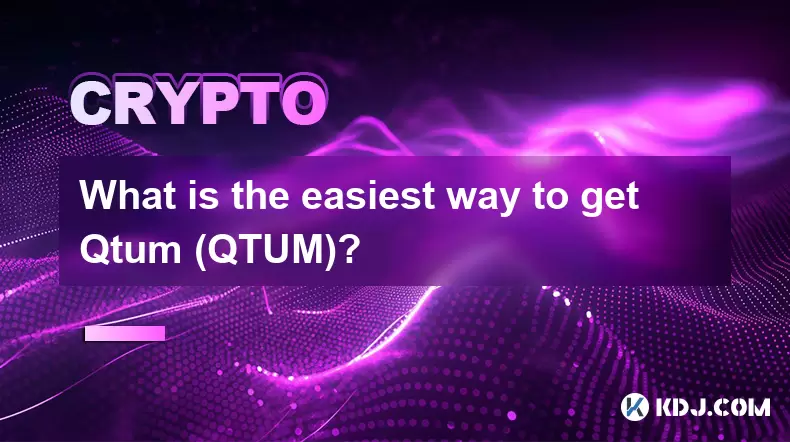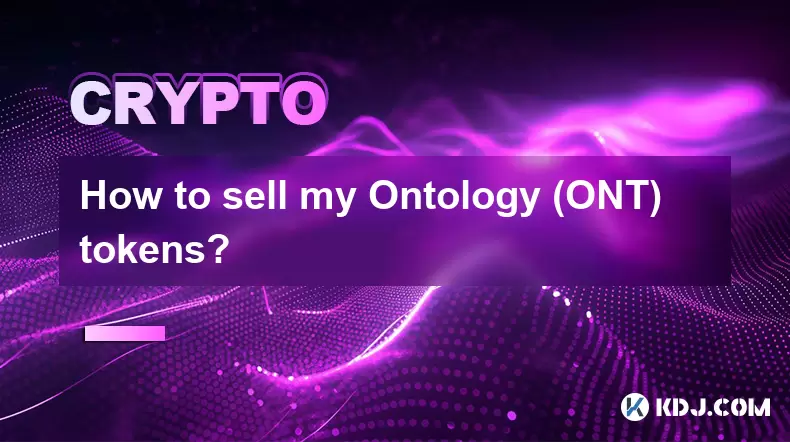-
 Bitcoin
Bitcoin $116800
0.20% -
 Ethereum
Ethereum $4192
5.51% -
 XRP
XRP $3.287
0.12% -
 Tether USDt
Tether USDt $1.000
0.00% -
 BNB
BNB $808.7
2.39% -
 Solana
Solana $180.4
2.23% -
 USDC
USDC $0.9999
0.01% -
 Dogecoin
Dogecoin $0.2390
6.80% -
 TRON
TRON $0.3365
-0.71% -
 Cardano
Cardano $0.8081
2.20% -
 Hyperliquid
Hyperliquid $43.74
6.50% -
 Chainlink
Chainlink $21.27
9.03% -
 Stellar
Stellar $0.4530
0.07% -
 Sui
Sui $3.908
3.00% -
 Bitcoin Cash
Bitcoin Cash $575.0
-1.02% -
 Hedera
Hedera $0.2632
0.61% -
 Avalanche
Avalanche $24.17
3.25% -
 Ethena USDe
Ethena USDe $1.001
0.02% -
 Litecoin
Litecoin $122.1
-0.24% -
 Toncoin
Toncoin $3.376
0.35% -
 UNUS SED LEO
UNUS SED LEO $8.981
-0.15% -
 Shiba Inu
Shiba Inu $0.00001373
5.86% -
 Uniswap
Uniswap $10.85
2.17% -
 Polkadot
Polkadot $4.080
4.03% -
 Dai
Dai $1.000
-0.02% -
 Pepe
Pepe $0.00001228
8.92% -
 Bitget Token
Bitget Token $4.506
0.09% -
 Cronos
Cronos $0.1581
3.76% -
 Monero
Monero $270.1
0.81% -
 Ethena
Ethena $0.7293
15.86%
What is the easiest way to get Qtum (QTUM)?
Qtum (QTUM) combines Bitcoin’s stability with Ethereum-like smart contracts, offering staking, dApp development, and governance on its Proof-of-Stake blockchain.
Aug 09, 2025 at 06:28 pm

Understanding Qtum (QTUM) and Its Ecosystem
Qtum (QTUM) is a blockchain platform that combines the reliability of Bitcoin’s core architecture with the flexibility of smart contracts similar to Ethereum. Designed to support decentralized applications (dApps) and enterprise solutions, Qtum enables developers to build and deploy smart contracts using familiar programming languages. The native cryptocurrency, QTUM, is used for transaction fees, staking, and governance within the network. Before acquiring QTUM, it's essential to understand that it operates on its own blockchain and is not an ERC-20 or BEP-20 token, which affects where and how it can be stored and traded.
The blockchain uses a Proof-of-Stake (PoS) consensus mechanism, allowing holders to participate in network validation and earn rewards. This makes QTUM not only a tradable digital asset but also a functional utility token within its ecosystem. Recognizing this dual role helps users make informed decisions when choosing how to obtain and manage their holdings.
Purchasing QTUM on Centralized Exchanges
One of the most straightforward methods to acquire QTUM is through centralized cryptocurrency exchanges (CEXs). Platforms like Binance, KuCoin, OKX, and Gate.io list QTUM against major trading pairs such as USDT, BTC, and ETH. To begin, users must complete account registration and identity verification (KYC), which varies by jurisdiction and exchange policy.
- Register an account on a supported exchange
- Complete identity verification as required
- Deposit fiat currency via bank transfer, credit card, or third-party payment processors
- Navigate to the QTUM trading pair (e.g., QTUM/USDT)
- Place a market or limit order to purchase QTUM
When using a credit card, the process is nearly instant. Exchanges like Binance offer a "Buy Crypto" section where users can directly purchase QTUM with Visa or Mastercard. Fees vary between 1% and 4%, depending on the payment method and platform. After purchase, QTUM is stored in the exchange wallet, but this is not recommended for long-term storage due to security risks.
Using Peer-to-Peer (P2P) Trading Platforms
Another accessible option is peer-to-peer (P2P) trading, which allows users to buy QTUM directly from other individuals using fiat money. Exchanges like Binance P2P and Huobi P2P act as intermediaries, providing escrow services to ensure transaction safety.
- Access the P2P section of the exchange
- Search for QTUM offers in your preferred currency (e.g., USD, EUR, CNY)
- Filter by payment method (bank transfer, PayPal, etc.) and seller rating
- Initiate a trade by selecting a seller and entering the purchase amount
- Transfer fiat to the seller using the agreed-upon method
- Confirm payment and wait for the seller to release QTUM from escrow
This method is especially useful in regions with limited banking access to crypto exchanges. It also allows negotiation of prices and payment terms. However, users must exercise caution by reviewing seller ratings and using only platform-mediated transactions to avoid scams.
Acquiring QTUM via Decentralized Exchanges (DEXs)
For users prioritizing privacy and control, decentralized exchanges (DEXs) offer a non-custodial way to obtain QTUM. However, since Qtum operates on its own blockchain, direct swaps on Ethereum-based DEXs like Uniswap are not possible. Instead, users must rely on cross-chain solutions or bridges.
One viable route is using multi-chain DEX aggregators such as THORChain-based platforms or SushiSwap (if QTUM is available via a wrapped version). This requires:
- Owning a compatible base asset (e.g., BTC, ETH, or BNB)
- Connecting a non-custodial wallet like MetaMask or Trust Wallet
- Using a bridge to convert assets to a QTUM-compatible chain (if applicable)
- Executing the swap through the DEX interface
This process is more complex and involves higher technical risk, including slippage and failed transactions. Gas fees and bridge costs also add to the expense. As such, this method is less suitable for beginners seeking the easiest path.
Transferring and Securing QTUM After Purchase
Once QTUM is purchased, it should be moved to a secure wallet to reduce exposure to exchange-related risks. The official Qtum Core Wallet is a full-node desktop application that supports staking and direct interaction with the blockchain. Alternatively, lightweight options include:
- Qtum Electrum: Fast, secure, and supports hardware wallet integration
- Trust Wallet: Mobile-based, supports QR code transfers and dApp browsing
- Ledger Nano S/X: Hardware wallets that store QTUM offline for maximum security
To transfer QTUM from an exchange:
- Open your preferred wallet and generate a receiving address
- Copy the QTUM address (ensure it starts with 'Q' or 'M' for mainnet)
- Log in to the exchange and navigate to 'Withdraw'
- Paste the address and specify the amount
- Confirm the withdrawal and monitor the transaction via a blockchain explorer like qtum.info
Always perform a small test transaction first. Never share your private keys or recovery phrases. Enable two-factor authentication (2FA) on all associated accounts.
Earning QTUM Through Staking and Airdrops
While not a direct acquisition method, staking allows users to grow existing QTUM holdings. After transferring QTUM to a compatible wallet like Qtum Core or Electrum, staking activates automatically when the wallet is unlocked and synchronized.
- Ensure the wallet has internet connectivity
- Keep the wallet unlocked (but encrypted)
- Wait for the network to confirm stake eligibility (based on coin age and amount)
- Earn rewards approximately every 4–5 minutes when a block is validated
Rewards vary based on network conditions but typically range between 5% and 7% annually. Some third-party platforms also offer QTUM staking services, though they require depositing tokens into custodial wallets, increasing counterparty risk.
Additionally, users may receive QTUM through airdrops tied to ecosystem developments or community campaigns. These require holding QTUM in eligible wallets during specific snapshots or participating in governance votes.
Frequently Asked Questions
Can I buy QTUM directly with PayPal?
Yes, some exchanges like KuCoin and Paxful allow users to buy QTUM using PayPal. Transactions occur through P2P listings where sellers accept PayPal as payment. Buyers must follow the platform’s dispute resolution process and avoid releasing funds before QTUM is received.
Is it safe to keep QTUM on an exchange?
While convenient, leaving QTUM on an exchange exposes it to hacking and operational risks. Exchanges are frequent targets for cyberattacks. For substantial holdings, transferring QTUM to a private wallet is strongly advised.
What should I do if I send QTUM to the wrong address?
Blockchain transactions are irreversible. If QTUM is sent to an incorrect address, recovery is only possible if the recipient is known and willing to return the funds. Always double-check addresses and use QR codes to minimize input errors.
Are there fees when buying QTUM with a credit card?
Yes, most exchanges charge a processing fee between 2% and 4% for credit card purchases. These fees are higher than bank transfers due to chargeback risks and payment processor costs. Users should compare rates across platforms before purchasing.
Disclaimer:info@kdj.com
The information provided is not trading advice. kdj.com does not assume any responsibility for any investments made based on the information provided in this article. Cryptocurrencies are highly volatile and it is highly recommended that you invest with caution after thorough research!
If you believe that the content used on this website infringes your copyright, please contact us immediately (info@kdj.com) and we will delete it promptly.
- Crypto Airdrops & Opportunities: What's Hot in August 2025
- 2025-08-09 22:30:12
- XRP, Cardano, and the Alluring Alternatives: A 2025 Crypto Landscape
- 2025-08-09 22:35:12
- Shiba Inu (SHIB) in the Crypto Landscape: Community, Trends, and Future Outlook
- 2025-08-09 20:30:12
- Solana, Unilabs, and Social Trends: Decoding the Crypto Buzz
- 2025-08-09 21:10:12
- Dogecoin, Meme Coins, and Layer Brett: Chasing the Next 100x
- 2025-08-09 20:50:12
- Crypto Presales in 2025: Are They Set to Outperform Launches?
- 2025-08-09 20:55:15
Related knowledge

Where can I buy UMA (UMA)?
Aug 07,2025 at 06:42pm
Understanding UMA and Its Role in Decentralized FinanceUMA (Universal Market Access) is an Ethereum-based decentralized finance (DeFi) protocol design...

How to buy Storj (STORJ) tokens?
Aug 09,2025 at 07:28am
Understanding Storj (STORJ) and Its Role in Decentralized StorageStorj is a decentralized cloud storage platform that leverages blockchain technology ...

What is the best app to buy Nano (NANO)?
Aug 09,2025 at 03:35am
Understanding Nano (NANO) and Its Unique FeaturesNano is a feeless, instant cryptocurrency designed for fast peer-to-peer transactions. Unlike many ot...

Where can I purchase Siacoin (SC)?
Aug 08,2025 at 11:14am
Understanding Siacoin (SC) and Its Role in the Sia NetworkSiacoin (SC) is the native cryptocurrency of the Sia decentralized cloud storage platform, a...

How to sell my Ontology (ONT) tokens?
Aug 09,2025 at 06:08pm
Understanding Ontology (ONT) and Its Trading EcosystemBefore selling your Ontology (ONT) tokens, it's essential to understand the nature of the crypto...

Where can I buy OMG Network (OMG)?
Aug 08,2025 at 12:57pm
Understanding OMG Network (OMG) and Its PurposeThe OMG Network, originally known as OmiseGO, is a layer-2 scaling solution built on the Ethereum block...

Where can I buy UMA (UMA)?
Aug 07,2025 at 06:42pm
Understanding UMA and Its Role in Decentralized FinanceUMA (Universal Market Access) is an Ethereum-based decentralized finance (DeFi) protocol design...

How to buy Storj (STORJ) tokens?
Aug 09,2025 at 07:28am
Understanding Storj (STORJ) and Its Role in Decentralized StorageStorj is a decentralized cloud storage platform that leverages blockchain technology ...

What is the best app to buy Nano (NANO)?
Aug 09,2025 at 03:35am
Understanding Nano (NANO) and Its Unique FeaturesNano is a feeless, instant cryptocurrency designed for fast peer-to-peer transactions. Unlike many ot...

Where can I purchase Siacoin (SC)?
Aug 08,2025 at 11:14am
Understanding Siacoin (SC) and Its Role in the Sia NetworkSiacoin (SC) is the native cryptocurrency of the Sia decentralized cloud storage platform, a...

How to sell my Ontology (ONT) tokens?
Aug 09,2025 at 06:08pm
Understanding Ontology (ONT) and Its Trading EcosystemBefore selling your Ontology (ONT) tokens, it's essential to understand the nature of the crypto...

Where can I buy OMG Network (OMG)?
Aug 08,2025 at 12:57pm
Understanding OMG Network (OMG) and Its PurposeThe OMG Network, originally known as OmiseGO, is a layer-2 scaling solution built on the Ethereum block...
See all articles

























































































